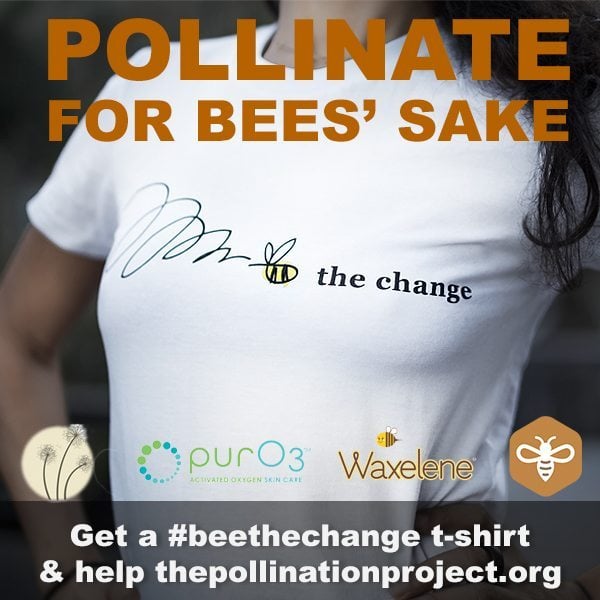Sharing is caring!
A lush and vibrant garden is flourishing from scratch. Blossoms have sprouted in the most surprising places. New trees are bearing bountiful fruits. The bees are zipping through the grassroots, pollinating tirelessly. The barren earth has become alive.
The Mission
In human terms, what happens if we put the money directly in the hands of the people closest to a cause? More often than not, these are people who would otherwise receive no funding at all. Their soil isn’t as rough as they’ve been told, says the Pollination Project, and they are more than happy to provide seeds. They focus on the folks whose body, heart, and soul are invested in the change, and are directly affected by it. The project selects people with drive and passion who seek to engage their own communities. They fund absolutely anyone worthy of a grant that can demonstrate a need. From teachers to environmentalists—even a 12-year-old animal activist—they do not discriminate.
The Pollination Project seeks to fund grants at the very beginning stages of a movement. The grassroots, if you will. They actively practice what is considered “compassion consciousness,” and look to fund teams that consider how their projects will impact life, directly and indirectly. Therefore, applicants must prove that everything they use is sustainable, recyclable, and doesn’t leave a footprint. The project awards grants to everyday people who inspire change from within. It focuses on the desire to establish heroes in every community. The founder, Ariel Nessel, had been a long-time animal rights activist and donor to some major organizations when he decided he wanted a greater connection.
“He saw the need for communities to have more heroes within their people,” Program Coordinator Julie Santos relays. “Everyone’s sort of waiting on the next Mahatma Gandhi or Martin Luther King to make changes, when really it’s going to be a community of people that are really shifting things. It’s not always an individual. History always shows one person doing it all, but really it’s a bunch of humans that got together and decided to make change.”
The ruminating began in June of 2012 and they officially launched the Pollination Project on January 1, 2013. Ariel brought aboard Alisa Hauser as Executive Director. Prior to joining the foundation, she was co-director of a social venture nonprofit that provides best practices in citizen-driven organizing. So they started guns-a-blazin!
Pollination Philanthropy
The idea is to award a $1000 grant every day for a year in order to seed any nascent social-change projects. They focus on casting as wide a net as possible. Rather than awarding one large venture, they divide the funding into targeted micro-grants. The Pollination Project grants are more for an initial push, rather than to sustain an organization. Simply put, they have trust and faith in the power of the people to work together to sustain their own cause. What is unique about the project is they realize that sometimes the will of the people is there, but the initial funding isn’t.
Alisa Hauser described the process eloquently when she said, “Pollination Philanthropy is the philanthropic equivalent of a dandelion: it relies on making a high volume of micro-grants to viable projects and committed people, knowing that each grant has the potential to take root and form a whole new flower—and also knowing that some won’t. But each seed holds the inherent possibility of becoming something vibrantly alive.”
Julie Santos added to this notion, “In order to receive funding from a foundation or grant, you usually need to have a history, a fluid track record. You need to demonstrate that your project can—and will—do x, y, and z … where we are really just doing a leap of faith.”
The Blossoms
Super hero Thomas Ponce is The Pollination Project’s 100th Grantee. At just 12 years old, Thomas has developed an animal rights activist website called Lobby for Animals that caters to all ages. The site features user-friendly tools and resources on many issues such as farming, testing, and using animals for entertainment purposes. It also contains easy instructional videos on a variety of topics ranging from writing effective letters to how to propose a bill. In other words, the kid is brilliant. He was recently named co-chair of the lobby day committee and he will be speaking at the 2013 Animal Rights Conference in Washington D.C. His main focus is on the practice of shark finning and he is a Regional Coordinator for Fin Free Florida. So what did you do at 12?
Speaking of being the bee’s knees, in August, Leslie Crowder was awarded a grant for his gentle beekeeping methods. Otherwise known as “the Bee Whisperer” by his students, Les has been teaching his method to low income communities for 30 years. He is the author of Topbar Beekeeping and preaches a safe way of keeping the insect away from pesticides and in a natural hive formation. He teaches in small towns and on reservations in New Mexico where he resides.
Applying
The Pollination Project is well aware that the grant process is foreign territory for many applicants. They work closely with participants and ask as many questions as necessary before selecting the grantees. The process is less strict than is customary, as it provides a broader scope of potential seedlings. The form itself is short (approximately two pages) and only has four main questions. It usually takes four to six weeks for a reply.
In addition to traditional grants, the Pollination Project offers a Pay-it-Forward grant, recently awarded to HoneyColony. HoneyColony is now working on raising $1,000 from sales of their organic hand-screened Bee The Change t-shirts. Once HoneyColony reaches its goal, which will make them the first as a grant recipient, The Pollination Project will choose another applicant to gift.
Unlike the traditional grant, the $1,000 Pay-it-Forward grant must be reinvested in a new seed within 24 months.
Perhaps this can all be summed up with a simple photograph sent by sustainable farmer Vincent Atitwa in Kenya. “He’s a Kenyan who is teaching farmers in Kenya how to do organic farming for food that is more nutritious,” says Julie. “Micronutrient food. Rich food—you know, but it’s coming from the farmers themselves that live in those communities. It’s like ‘Hey, I know you have this idea.’ He would not have gotten funded any other way—but we funded it, and he sends us this picture. And [on a] construction paper, they scribbled ‘project promoted by: The Pollination Project,’ and standing behind it is an awesome farmer with an ear to ear smile.”
 Brianna Berry first began writing professionally as a tech writer for an environmental testing firm and later for a digital media company. In addition, she writes several articles for blogs on a daily basis, all with SEO enriched frameworks. She has the capability to elaborate on a multitude of subjects that run the gamut from health and nutrition to cloud computing and even pop culture. A self admitted foodie, she cooks on a daily basis and always experiments in the kitchen. Brianna has her B.A. in Political Science from California State University Northridge with a minor in Psychology.
Brianna Berry first began writing professionally as a tech writer for an environmental testing firm and later for a digital media company. In addition, she writes several articles for blogs on a daily basis, all with SEO enriched frameworks. She has the capability to elaborate on a multitude of subjects that run the gamut from health and nutrition to cloud computing and even pop culture. A self admitted foodie, she cooks on a daily basis and always experiments in the kitchen. Brianna has her B.A. in Political Science from California State University Northridge with a minor in Psychology.
Submit your story or essay to Buzzworthy Blogs.

